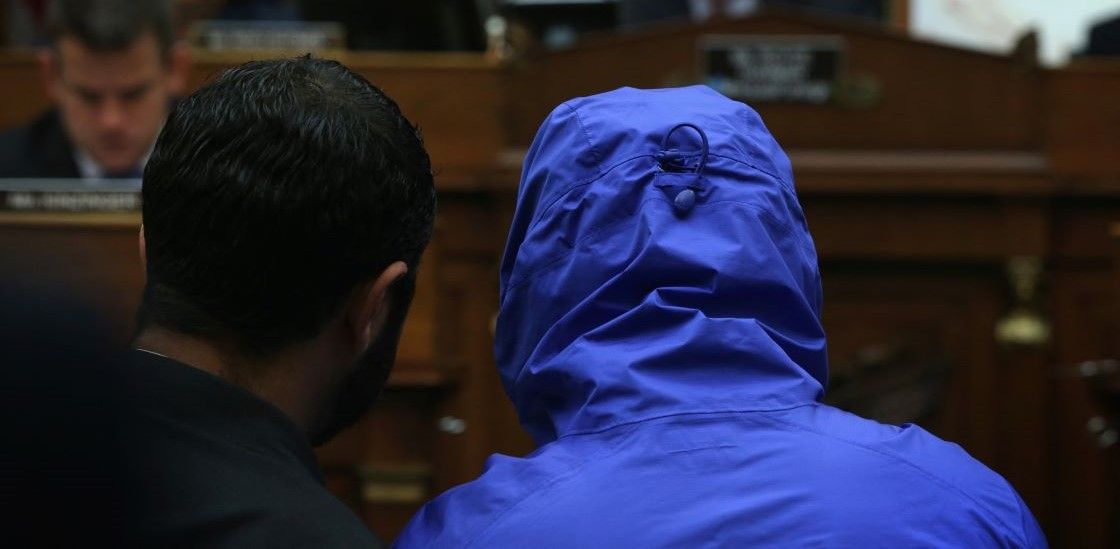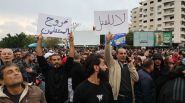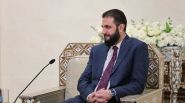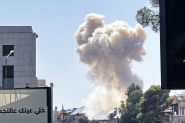- Home
- Arab World
- Syrian Whistleblower "Caesar" Reveals Identity

"Caesar," (in a blue hooded jacket), who has smuggled out of Syria more than 50,000 photographs that document the torture and execution of more than 10,000 dissidents, listens to an interpreter during a briefing before House Foreign Affairs Committee July 31, 2014 on Capitol Hill in Washington, DC. ©Alex Wong / Getty Images North America / Getty Images via AFP
A Syrian whistleblower, who smuggled tens of thousands of pictures depicting torture under Bashar al-Assad, on Thursday revealed his identity for the first time, two months after the longtime ruler was toppled.
"I am First Lieutenant Farid al-Madhan, the (former) head of the forensic evidence department at the military police in Damascus, known as Caesar," he said in a televised interview with Qatari broadcaster Al Jazeera.
Identified at the time only as a Syrian military photographer under the pseudonym Caesar, he had fled the country in 2013, taking with him some 55,000 graphic images taken between 2011 and 2013.
Describing himself during the interview as a "son of a free Syria," he said he was from the city of Daraa, "the cradle of the Syrian revolution."
Following the outbreak of Syria's civil war in 2011 with the brutal repression of anti-government protests, he said he was tasked with "taking pictures of victims of detention."
These included "old men, women, and children who were detained at security checkpoints in Damascus and from protest squares that called for freedom and dignity," said Madhan, who added that he currently resides in France.
"They were detained, tortured, and killed in bloody, systematic ways, and their bodies were transferred to military morgues to be photographed and taken to mass graves," he continued.
He said he postponed his defection from the government forces and fled the country in order to be able to "collect the largest number of pictures documenting and incriminating the Syrian regime apparatuses of committing crimes against humanity."
He said the pictures were smuggled in a flash drive that he sometimes hid in his socks or a bundle of bread to escape government security checkpoints or those of the opposition.
The photos, authenticated by experts, show corpses tortured and starved to death in Syrian prisons.
Some people had their eyes gouged out. The photos showed emaciated bodies, people with wounds on the back or stomach, and also a picture of hundreds of corpses in a shed surrounded by plastic bags used for burials.
Assad's government said only that the pictures were "political."
But Caesar testified to a US Congress committee, and his photographs inspired a 2020 US law that imposed economic sanctions on Syria and judicial proceedings in Europe against Assad's entourage.
Germany, the Netherlands, and France have since 2022 convicted several top officials from the Syrian intelligence service and militias.
With AFP
Read more




Comments